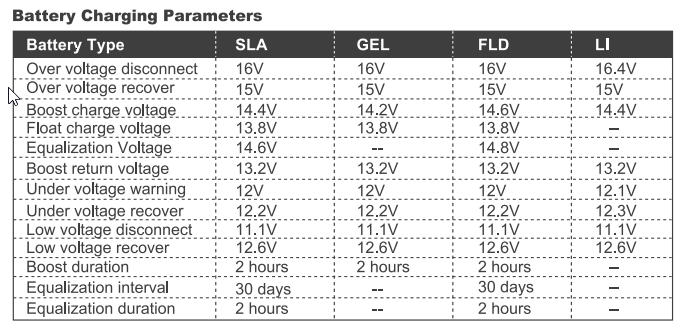There have been several posts here about the right settings for Victron products with Renogy batteries. Most of the answers have been estimates and there has been very little documented from Renogy.
Renogy recently introduced a new MPPT/Isolator charger (DCC50S). What is interesting is that in the manual they give the following charge parameters:

Based on this chart would it be safe to say that setting the following would be the best course of action for these Renogy LIoN batteries?
Absorption voltage: 14.4V
Maximum absorption time: 1 hour
Float voltage: 9V (since that is the lowest it can be set. I've been using 13.6V)
Equalization voltage: 14:4 (just in case it gets set to equalize - that button is easy to hit on the mobile app)
Automatic equalization: Disabled.
Thoughts?
